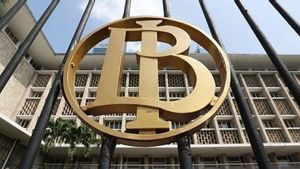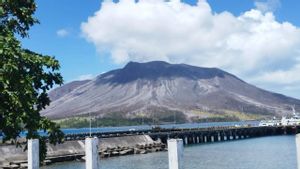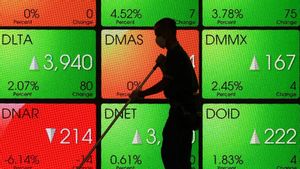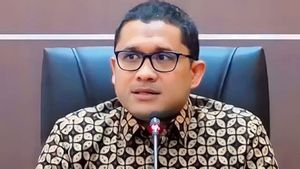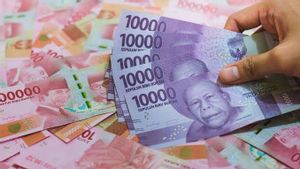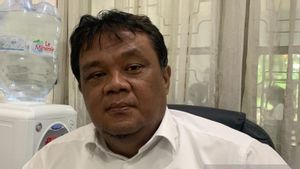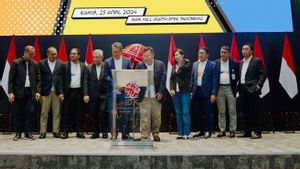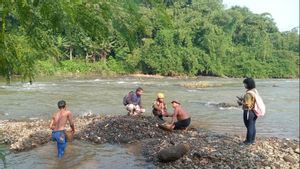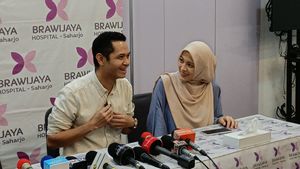
JAKARTA - The Central Statistics Agency (BPS) has released and summarized data on the poor in Indonesia which is based on the National Economic Survey which involves various research instruments.
Through this article, VOI will present these data in a journalistic summary so that everyone can read and understand them. The following is the complete data.
Data on the Poor in Indonesia According to BPS Research

BPS in determining the poverty rate in Indonesia uses the basic needs approach method or the concept of the ability to meet basic needs.
Based on the method used by BPS, poverty in Indonesia is seen as an economic inability to meet basic food and non-food needs.
The food poverty line itself is the value of the minimum food expenditure needs or the equivalent of 2100 calories per capita per day.
Then the non-food poverty line is the minimum expenditure value used for housing, clothing, education, health, and various other basic (non-food) needs.
What is the Mean of the Poor in Indonesia?
BPS explains that the definition of the poor is those who have an average expenditure per capita (per month) below the poverty line.
The method used by BPS has been in use since 1998. Then, to make the calculation results consistent, the method used is apple to apple or proportionate from time to time.
Some of the Factors of Poverty in Indonesia
The following are some of the factors affecting poverty in Indonesia during the 2020 period, as reported by BPS.
1. The COVID-19 Pandemic
In Indonesia, the COVID-19 pandemic is starting to have an impact in early 2020. The pandemic has had an impact on changing people's behavior, in addition to that, economic activity and income have also had an effect. Thus the pandemic has contributed to the number of new poor people in Indonesia.
As a result of the Covid-19 pandemic, it shows that the poverty rate in urban areas has increased higher than in rural areas.
In March 2021, the most cases of COVID-19 occurred in the islands of Java and Bali, so that most of the poverty hit the region and made the increase in poverty in the regions high.
2. Growth of Household Consumption Expenditure
The growth of household consumption expenditure on Gross Domestic Product (GDP) is known to be slowing down.
BPS explained that if household consumption expenditure in the first quarter of 2020 only grew by 2.84%, this increase decreased compared to the same period in 2019 (amounting to 5.02%).
3. The decline of the tourism sector
The COVID-19 pandemic has a serious impact on the total number of foreign tourist visits to Indonesia in March 2020.
The decline in tourist visits was recorded at 64.11 percent when compared to the same period in March 2019. However, the decline in tourism to Indonesia has started to be affected in February 2020.
4. Increased Prices of Basic Needs
The factor that has contributed to the increase in the poverty rate in Indonesia is the skyrocketing prices of basic necessities. During the period from September 2019 to March 2020, the prices of basic necessities nationally experienced an increase.
Some of the increases included basic necessities such as rice (up 1.78 percent), purebred chicken (up 5.53 percent), cooking oil (up 7.06 percent), eggs (up 11.10 percent), and sugar (up 13.35 percent).
Indonesia's Poverty Line Reaches IDR 454,652 per capita per month
BPS noted that during September 2019 to March 2020, the poverty line in Indonesia had increased by 3.20 percent, or from IDR 440,538 per capita (per September 2019) to IDR 454,652 per capita (per month in March 2020).
Meanwhile, the food commodity plays a role in increasing the poverty line. This has a bigger effect when compared to the role of non-food commodities.
Some Definitions of Poverty According to Experts
According to the Professor of Public Policy at the Faculty of Economics and Business UNG, Yulianto Kadji, in his article entitled Poverty and Its Theoretical Concepts, discusses the notion of poverty according to several experts.
1. Poverty According to Louis J. Koetze
Kotze explained that the poor have a relatively good ability to obtain resources and through the opportunities that exist.
However, even though assistance came from outside, the poor sometimes did not use it.
Kotze's approach is considered unsuccessful because no society has ever been able to live and develop if it is isolated from other groups of people. This is because isolation creates a passive attitude and makes it poorer.
2. Supriatna: Poverty is a Limited Situation
Supriatna (1997: 90) then explains that poverty is a very limited condition and he explains it as "what happened was not the will of the person concerned".
A society is called poor if it is characterized by low levels of education, work productivity, income, health, nutrition, and welfare.
The causes of poverty include limited human resources. This is due to the formal or non-formal education channels — which in turn have consequences for the low level of informal education.
3. Five Characteristics of the Poor According to Emil Salim
Emil Salim explained five characteristics of the poor. First, they do not have their own production factors. Second, they do not have the possibility to acquire production assets on their own.
Third, low levels of education. Fourth, people who do not have facilities. Fifth, people who are relatively young and do not have adequate skills or education.
4. World Bank
The World Bank in front of UN members in 1990 explained a report entitled Poverty and Human Development, as follows:
The case for human development is not only or even primarily an economic one. Less hunger, fewer child death, and better change of primary education are almost universally accepted as important ends in themselves.
The meaning of the quote is that "human development is not only prioritized on the economic aspect but more importantly prioritizes the aspect of education which is aimed universally for the self-interest of the poor to improve their socioeconomic life".
5. Booth & Me Cawley
Booth and Me Cawley explained that many countries measure the level of welfare of their people through their per capita income. However, this can only be enjoyed by a small part of the community.
This method, according to Booth and Me Cawley, makes most of the poor less benefited and even disadvantaged (in Moeljarto T, 1993).
Booth and Me Cawley explained that in order to solve the public welfare problem, the right policy is needed, namely by identifying the groups of people who live below the poverty line and their characteristics first.
A society is called poor if it is marked by a deficiency or inability to meet the level of basic human needs. Thus, poverty is the unfulfilled basic needs that include primary and secondary aspects.
The definition of primary aspects is the lack of knowledge and skills assets. Meanwhile, secondary aspects are poor social networks, financial resources, and informal (malnutrition, water, housing, poor health, and low education).
6. Minimum Physical Requirement Ratio
Zulkifli Husin explained other criteria for measuring population poverty, namely using the Minimum Physical Needs Ratio (RKFM) method. RKFM is assumed to be the minimum physical (population) need in accordance with the conditions faced at a certain time.
In addition to data on the poor in Indonesia, follow other domestic and foreign news only on VOI, Time to Revolutionize the News!
The English, Chinese, Japanese, Arabic, and French versions are automatically generated by the AI. So there may still be inaccuracies in translating, please always see Indonesian as our main language. (system supported by DigitalSiber.id)


